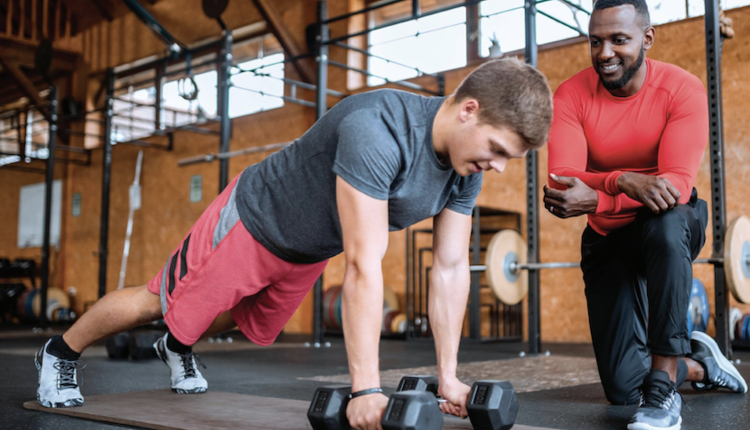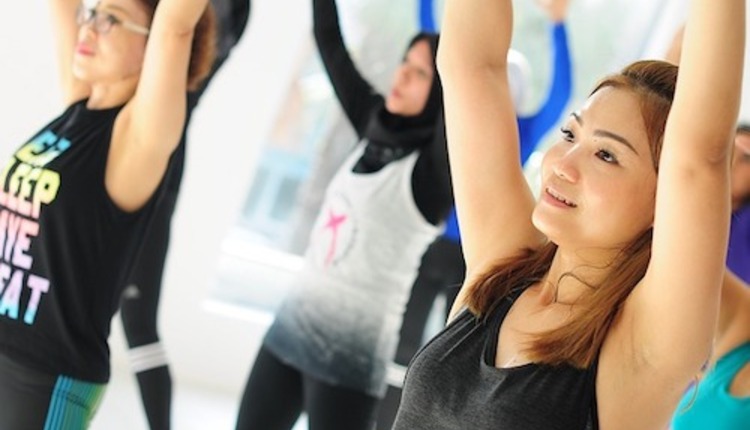Client treatment matching has been popular for years in the psychotherapy field and has gained popularity in programs for smoking cessation and weight loss, but until recently it has been slow to reach the arena of exercise and physical activity programs. Several community and worksite programs have implemented such programs to help people become more physically active.
According to the stages of motivational readiness to change model, people differ in their levels of readiness to change their behavior, and programs need to use various strategies and techniques to bring about desired behavior changes. For example, the program goal for a client who is not thinking about change could be to help him or her begin to think about change by reading articles about the health, body image, and self-esteem benefits of physical activity and perhaps by taking a couple of 10-minute walks during the course of a week. In contrast, the goal of a client doing some physical activity might be to help him or her build up to 30-minute walks on at least five days each week.
Notice that the following programs avoid the one-treatment-fits-all approach:
Imagine Action: A Community-Based Program. Adult participants enrolled through their workplaces or in response to advertisements. The program lasted 6 weeks and consisted of stage-matched self-help materials, a resource manual, and weekly fun walks and activity nights. After the program, 30 percent of the readiness-to-change stage 2 participants and 61 percent of the stage 3 participants progressed to stage 4, demonstrating that a low-cost, relatively low-intensity program can produce important changes in physical activity.
Jump Start to Health: A Workplace-Based Study. The study examined the usefulness of a stage-matched physical activity program in the workplace for healthy, sedentary employees. The program consisted of print materials specifically tailored to participants' stages of motivational readiness to change that were delivered at the beginning of the study and one month later. Another group of participants received the American Heart Association manuals that do not address readiness to change. Examination of participants' responses to questionnaires revealed that 37 percent of subjects in the stage-matched group became more active, compared to 27 percent in the non-stage-matched program.
Jump Start: A Community-Based Study. The community-based study compared a standard print-based program to a stage-matched print program that also provided individualized feedback to participants each time they filled out a questionnaire about their physical activity behavior. Results showed that those who received the individualized program were more likely to achieve recommended levels of physical activity. Participants were also more likely to maintain that activity through a 12-month follow-up period than were participants who were given standard materials promoting physical activity.
Project Active: A Community-Based Study. Project Active was a 2-year study that compared lifestyle physical activity programs with a structured exercise program. The lifestyle group members met for behaviorally oriented meetings each week, addressing items such as realistic goal setting, finding people to support their physical activity, and rewarding physical activity. The structured-group participants were given a six-month membership to a fitness center and met with an exercise trainer. After the 2-year study period, both groups showed improvements in energy expenditure and cardiorespiratory fitness. Thus, regardless of the setting, program coordinators should be thinking broadly about the type of activity to encourage.
Project STRIDE: A Community-Based Study. Project STRIDE tested two delivery channels-telephone and print-to determine which was more effective in promoting physical activity among healthy, sedentary adults. Results proved both telephone and print interventions enhance the adoption of physical activity among sedentary adults; however, print interventions may be particularly effective in maintaining physical activity in the longer term.
Step Into Motion: A Community-Based Study. Step Into Motion, a study based on the transtheoretical model, tested a Web-based version of the protocol used in Project STRIDE. Results found the Internet to be a viable tool that can increase physical activity among sedentary, healthy adults.
Overall, these studies suggest that using a stage-matched approach helps people progress toward more active lifestyles. These studies also demonstrate that matching interventions to participants' levels of motivational readiness is a more effective approach than using a one-treatment-fits-all approach. Additionally, effective programs need not be gym based. Lifestyle activity programs are quite effective in helping clients achieve the improvements in health and fitness they want.
For more information on Motivating People to Be Physically Active, Second Edition, or other physical activity books, visit www.HumanKinetics.com or call 800.747.4457.











